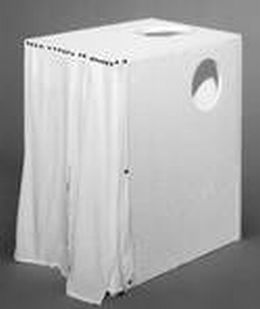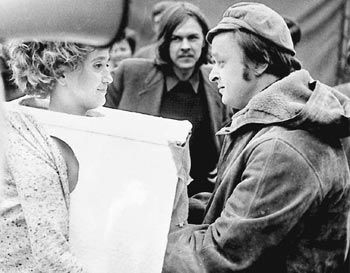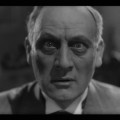Towards a Deconstruction of the Screen
Denis GöttelDennis Göttel Studied theatre, film and media studies, german studies and politics at the University of Frankfurt am Main (Germany) from 2000 to 2006; since 2007 fellow at the Initiativkolleg ‘Senses-Technology-Mise-en-scene: Media and Perception" at the University of Vienna (Austria); current PhD project: theory and history of the (cinematographic) screen.
Most recent publication:
Erscheinen und Verschwinden. Ästhetik, Geschichte, Kinematografizität, in: Kern, D.; Nessel, S. (Ed.) (2008): Unerhörte Erfahrung. Texte zum Kino. Frankfurt a. M.: Stroemfeld.
Email:
dennis.goettel@univie.ac.at
- Derrida, J. (1966): Freud und der Schauplatz der Schrift, in Derrida, J. (2003): Die Schrift und die Differenz. Frankfurt a. M.: Suhrkamp, 302-350.
- Kuntzel, T. (1976): Notizen über den filmischen Apparat, in Karl Sierek; Barbara Eppensteiner (ed.) (2000): Der Analytiker im Kino. Siegfried Bernfeld Psychoanalyse Kino, Frankfurt a. M.: Stroemfeld, 198-204.
- Marks, L. (2000): The Skin of the Film. Intercultural Cinema, Embodiment, and the Senses. Durham;
London: Duke University Press.
The text searches for metaphors of the cinematographic screen in film theory on the one hand and for the use of the screen in art performances of the so called Expanded Cinema. Referring to Jacques Derrida's definition of a material based metaphoricity I try to find a very special connexion between screen and the use of metaphors.
Skin, Chalkboard, and the Expanded Cinema of VALIE EXPORT
This text is searching for representations of the cinematic screen in film theory. I do not intend to touch the realm of other screens, for example the television screen. In a second step I will try to show the ways in which specific art performances approximate the screen. My assumption thereby is that the screen in the cinema is – epistemologically speaking – an object which is basically an object of elusion.
The function of the screen within the dispositive of cinematography is to be the surface of the projection of the film. In other words, its function is to disappear. Whenever the screen is in use as a screen, the screen is a screen, the screen itself disappears. The fabric body of the screen is a borrowed physique. The impossibility to perceive the screen is the precondition for perceiving the projected film. Even when the screen is not in use for projection, in many theaters the curtains are drawn to hide it – just as if to avoid a horror vacui.
This characteristic of the cinematographic screen – its status of permanent disappearing – corresponds with the fact that the issue of the screen proves to be quite marginalized in film study debates, even in those that refer directly to the cinematographic setting. But on the rare occasions the screen is mentioned, it is mainly transformed into a metaphor, for example as window, mirror, frame or shield. I would like to focus on two texts: firstly on Laura Marks’ The Skin of the Film, secondly on Thierry Kuntzel’s „A Note upon the Filmic Apparatus”. With this selection I refer to two competing schools in the history of film theory: the neo-phenomenological, somatic one, focused on the audience’s provenance on the one hand, and the textual-semiological on the other. The articulated positions – or, in cinematographic terms, projections – on the screen can be examined more or less on the margins of these texts. The two metaphors referring to the screen are the skin and the chalkboard.
Laura Marks’ The Skin of the Film [1] uses the term ‘Haptic Visuality’, subsequent to the phenomenology of Merleau-Ponty, for an analysis of film screened in the cinema. She maintains the synaesthesia of perception in opposition to the primacy of the gaze. Therein, the Haptic is a special issue. Film viewing – according to Marks – is not mainly a process of cognition but of somatic sensuality. The relation between audience and film is described as a mimetic one and „as an exchange between two bodies” (Marks 2000: 149). This haptic relation between two ‘bodies’ implies the skin as sensitive surface. Whereas Marks does not explicitly call the screen the skin, we can draw this connection because she refers to film viewed by an audience in a cinema. „Rather than witnessing cinema as through a frame, window, or mirror, the viewer shares and performs cinematic space dialogically” (Marks 2000: 149).
At the very beginning of her text Marks gives an interesting explication of the title of her book: „The Skin of the Film offers a metaphor to emphasize the way film signifies through its materiality, through a contact between perceiver and object represented. It also suggests the way vision itself can be tactile, as though one were touching a film with one’s eyes: I term this haptic visuality. Finally, to think of film as a skin acknowledges the effect of a works’s circulation among different audiences, all of which mark it with their presence.” (Marks 2000: xi)
I want to delay a discussion on the terms ‘metaphor’ and ‘materiality’ which are cited by Marks – though not in a systematic way – to concentrate first on a different metaphor of the screen used in Thierry Kuntzel’s „A Note upon the Filmic Apparatus” [2] .
Already in the title we find a reference to Sigmund Freud’s „A Note upon the ‘Mystic Writing-Pad'” [3] , which Kuntzel converts into the filmic apparatus. Let me give a very short summary of Freud’s text: Freud tries to find an illustration on the way the psychic apparatus functions. After rejecting the illustrations of writing on a piece of paper and on a chalkboard, Freud introduces a child’s toy – the mystic writing pad. Without going into details we can say that Freud holds on to a metaphor that can demonstrate how the psychic apparatus can both receive new perceptions and retain memories, traces of earlier perceptions, at the same time.
In the following Kuntzel explores another, perhaps better, representation for the psychic apparatus: cinematography. „The filmic apparatus consists of a kind of a chalkboard – the screen which is equably white – no matter of which material (cotton, asbestos, chicle, metal) – and a filmstrip” (Kuntzel 2000: 200). Kuntzel continues that the screen is not scratched by a gib but that a simple ray of light touches the screen and that its receptiveness is infinite. „Switching off the projector lamp suffices to make the surface of the screen receptive anew” (Kuntzel 2000: 201). Finally Kuntzel imagines Freud changing the filmic apparatus into „the Metaphor of another [apparatus]” (Kuntzel 2000: 201): the psychic apparatus.
Once again we are confronted with the term metaphor. And again it relies on a certain kind of materiality. Both texts reflect on their using a metaphor to stand in for the cinematic apparatus by description: skin and chalkboard. What is missing, however, is that they explicitly reflect on the method of metaphoricity, especially regarding a possible causal connexion of the material of the screen itself.
In „Freud and the Scene of Writing” [4] Jacques Derrida interestingly redefines the term metaphor by reading Note upon the ‘Mystic Writing-Pad’. The metaphor of the mystic writing-pad owns a materiality, owns a bodily handling. As Derrida says, „The metaphor as rhetoric or didactic is only possible due to the solid metaphor, due to a not ‘natural’ but historic generating of an additional machine which appends the psychic configuration to supplement its finiteness” (Derrida 2003: 346). Not only does Derrida abandon to question whether the metaphor is still appropriate, but his concept of the term metaphor opposes the metaphor as a translation of the primordial, self-identic object.
Referring to the screen in the cinema there is an ever closer connection to metaphoricity. Speaking of the screen as skin or chalkboard means theoretical ‘projections’ on the screen. The metaphors try to make the screen ‘visible’ but also cover it in the same attempt. The metaphors themselves are material and refer to a material: the going-to-be-projected screen. Skin and chalkboard can not be judged as appropriate or inappropriate examples. Furthermore using metaphors like these means to act ‘cinematographically’ in the sense of understanding the screen as an object which is admittedly bare and white, but turns into function as screen the moment it is being projected on.
While this first part of my paper regarding metaphorical ‘projections’ on the screen from somatic film theories on the one hand and from textual theories on the other follows a textual method, I am now taking a look at the practice of expanded cinema. The filmic and cinematographic performances which are related among other things to the apparatus debate of the 60s and 70s may be called somatic theory-making, or politically inspired bodily enactment of theory, or simply: theory with the body. Some of these performances focus very explicitly on the cinematic dispositive, its configuration of perception. The object of the screen becomes a special issue, for example in works of Nam June Paik, Michael Snow, Peter Weibel, Ernst Schmidt jr., and Anthony McCall. The screen is presented as bare and white, just lit by the projector, reversed, doubled, blanked with the curtain and so on. In summary,: the performances try to make the screen ‘visible’ and to open it for an aesthetic perception by playing with the screen’s characteristics.
I have decided to present just one performance: Tapp- und Tastkino (Tap and Touch Cinema) by VALIE EXPORT [5] which was performed in several cities from 1968 to 1971. The reason for my particular choice is that the comment and transformation of cinema can be judged as the most radical attempt because there is no cinema, no projector, no screen involved in the performance. The space of cinema has transformed into the public sphere of the city’s street. Furthermore, the cinema saunters through the streets. Performance artist VALIE EXPORT ties a white wooden box around her naked upper body and walks through the street. While nobody could see her breasts, she invited men, women, and children to reach through the curtained front of the box with both hands and touch her.
Beside the feminist character of this performance marked by making her body available to anonymous people voluntarily, I am interested in another aspect of the performance: the total transformation of cinema and curtained screen. The inability to touch something on screen is counteracted. In this complete transfer from cinematographic dispositive to another scene the screen itself does not become visible. But it is the space where the citation of the cinema and its bodily re-enactment – text and body – coincide and overlap.
From this perspective VALIE EXPORT’s Expanded Cinema performance can be seen as a material metaphor, or a metaphorized material according to the cinema. Speaking with Derrida’s concept of metaphoricity we can say that Expanded Cinema is not just an art movement but also a scene where cinema itself can be discussed: on other scene, on other place. Then for cinema studies the term ‘expanded cinema’ becomes relevant in a wider sense: the discussion of cinema and cinematic dispositive can be expanded to a concept of cinematograficity.
With the two cited texts by Marks and Kuntzel and the idea of ‘Expanded Cinema’ represented by the performance of VALIE EXPORT I see the possibility to open a discourse about the cinematic screen from the edges, or from where it does not seem to be existing. I have shown different attempts to react to the difficult ‘object’ of the screen, its whiteness, and through them the (infinite) possibility, or better: necessity to ‘project’ on the screen. So the object of the screen breaks with a concept of identity through itself. The projections – neither the theoretical nor the filmic – do not taint a falsely supposed essence of the screen. Metaphorically speaking, the screen bears no scars or traces of chalk.
Jegyzetek
- [1] Marks, L. (2000): The Skin of the Film. Intercultural Cinema, Embodiment, and the Senses. Durham; London: Duke University Press. ↩
- [2] Kuntzel, T. (1976): Notizen über den filmischen Apparat, in Karl Sierek; Barbara Eppensteiner (ed.) (2000): Der Analytiker im Kino. Siegfried Bernfeld Psychoanalyse Kino, Frankfurt a. M.: Stroemfeld, 198-204. I translate from the German translation of Kuntzel’s text. ↩
- [3] The German version: Freud, S. (1925): Notiz über den Wunderblock, in Freud, S. (2000): Studienausgabe, Band 3: Psychologie des Unbewußten. Frankfurt a. M.: Fischer, 363-369. ↩
- [4] I refer to and also translate from the German version of Derrida’s text: Derrida, J. (1966): Freud und der Schauplatz der Schrift, in Derrida, J. (2003): Die Schrift und die Differenz. Frankfurt a. M.: Suhrkamp, 302-350. ↩
- [5] Tapp- und Tastkino (VALIE EXPORT, 1968-1971). ↩
Erre a szövegre így hivatkozhat:
Dennis Göttel: Towards a Deconstruction of the Screen. Apertúra, 2008. nyár. URL:
https://www.apertura.hu/2008/nyar/goettel/




